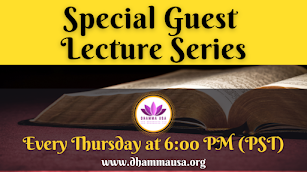(Dukkha nirodha gamini patipada ariya sacca)
This is a wonderful commentary of the Fourth Noble Truth which we can find in the Tipitaka itself. The explanation is done by none other than the Buddha's first disciple, Venerable Sariputta, who is famed as the foremost among his disciples in terms of discernment. This sutta also can be called a savaka bhasita (preached by the disciples) yet included into the category of Buddha dhamma for it is originally approval of the content by the Buddha himself. Hope this will of some use to those learners of Buddhist doctrine.
Sadhu Sadhu Sadhu!!!
=============
"And what is the Noble Truth of the Path leading to the cessation of suffering?
It is this Noble Eightfold Path itself, namely:
- right understanding
- right thought
- right speech
- right action
- right livelihood
- right effort
- right mindfulness
- right concentration.
It is this
- knowledge of suffering,
- knowledge of the arising of suffering,
- knowledge of the cessation of suffering,
- knowledge of the path leading to the cessation of suffering — this is called right understanding.
"What is right thought?
- Thought of renunciation,
- thought of goodwill,
- thought of not harming — this is called right thought.
"What is right speech?
- Abstention from false speech,
- abstention from tale-bearing,
- abstention from harsh (abusive) speech,
- abstention from idle chatter (gossip), this is called right speech.
"What is right action?
- Abstention from killing,
- abstention from stealing,
- abstention from illicit sexual indulgence, this is called right action.
"What is right livelihood?
Herein (in this dispensation) the ariyan disciple
- avoiding wrong livelihood,
- makes his living by right livelihood, this is called right livelihood.
"What is right effort?
Herein a monk
- puts forth will, strives, stirs up energy, strengthens his mind, exerts himself to prevent the arising of evil, of unwholesome thoughts that have not yet arisen;
- puts forth will... (as before) to banish the evil, unwholesome thoughts that have already arisen;
- puts forth will... to develop wholesome thoughts that have not yet arisen; and
- puts forth will, strives, stirs up energy, strengthens his mind, exerts himself to maintain, to preserve, increase, to bring them to maturity, development, and to complete the wholesome thoughts that have arisen. This is called right effort.
"What is right mindfulness?
- Herein a monk lives practicing body contemplation on the body, ardent, clearly comprehending and mindful (of it), having overcome covetousness and dejection concerning the world (of the body).
- He lives practicing feeling-contemplation on the feelings, ardent, clearly comprehending and mindful (of it) having overcome covetousness and dejection concerning the world (of feelings).
- He lives practicing mind-contemplation on the mind, ardent, clearly comprehending and mindful (of it) having overcome covetousness and dejection concerning the world (of the mind).
- He lives practicing mind-object contemplation on the mind objects, ardent, clearly comprehending and mindful (of it) having overcome covetousness and dejection concerning the world (of mental objects). This is called right mindfulness.
"And what is right concentration?
- Herein a monk aloof from sense desires, aloof from unwholesome thoughts, attains to and abides in the first meditative absorption (jhana) which is detachment-born and accompanied by applied thought, sustained thought, joy, and bliss.
- By allaying applied and sustained thought he attains to, and abides in the second jhana which is inner tranquillity, which is unification (of the mind), devoid of applied and sustained thought, and which has joy and bliss.
- By detachment from joy he dwells in equanimity, mindful, and with clear comprehension and enjoys bliss in body, and attains to and abides in the third jhana which the noble ones (ariyas) call: 'Dwelling in equanimity, mindfulness, and bliss.'
- By giving up of bliss and suffering, by the disappearance already of joy and sorrow, he attains to, and abides in the fourth jhana, which is neither suffering nor bliss, and which is the purity of equanimity-mindfulness. This is called right concentration.
"This is called the Noble Truth of the Path leading to the cessation of suffering.
Reference: Saccavibhanga sutta (Ven. Piyadassi's translation)





























0 comments:
Post a Comment
Your comments and feedback are very helpful to us in improving our posts. We really appreciate your time. Thank you!
Dhamma USA Team.